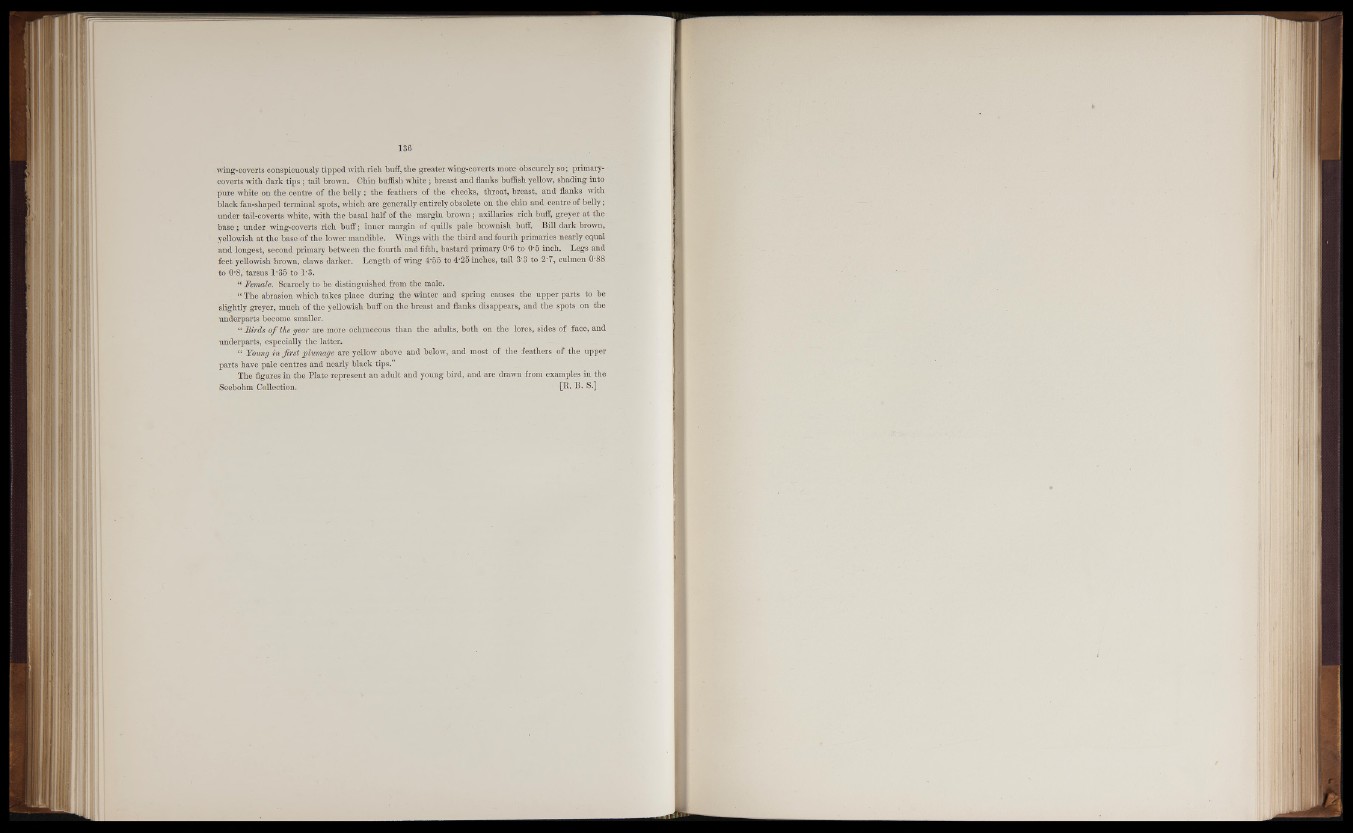
136
wing-coverts conspicuously tipped with rich buff, the greater wing-coverts more obscurely so; primary-
coverts with dark tips ; tail brown. Chin huffish white ; breast and flanks buffish yellow, shading into
pure white on the centre of the b e lly ; the feathers of the cheeks, throat, breast, and flanks with
black fan-shaped terminal spots, which are generally entirely obsolete on the chin and centre of b elly;
under tail-coverts white, with the basal half of the margin brown; axillaries rich buff, greyer at the
base; under wing-coverts rich buff; inner margin of quills pale brownish buff. Bill dark brown,
yellowish at the base of the lower mandible. Wings with the third and fourth primaries nearly equal
and longest, second primary between the fourth and fifth, bastard primary 0*6 to 0‘5 inch. Legs and
feet yellowish brown, claws darker. Length of wing 4'55 to 4*25 inches, tail S'3 to 2'7, culmen 0'88
to 0'8, tarsus 1*35 to 1*3.
“ Female. Scarcely to be distinguished from the male.
“ The abrasion which takes place during the winter and spring causes the upper parts to be
slightly greyer, much of the yellowish buff on the breast and flanks disappears, and the spots on the
underparts become smaller.
“ Birds o f the year axe more ochraceous than the adults, both on the lores, sides of face, and
underparts, especially the latter.
“ Young in fir s t plumage are yellow above and below, and most of the feathers of the upper
parts have pale centres and nearly black tips.”
The figures in the Plate represent an adult and young bird, and are drawn from examples in the
Seebohm Collection. [R- B- S.]